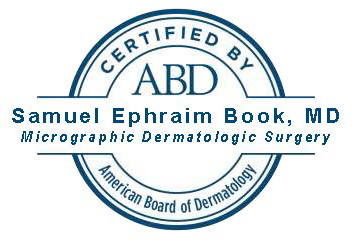What is Photodynamic Therapy?
Photodynamic therapy (PDT) is a special treatment performed with a topical photosensitizing agent called Levulan (5-aminolevulinic acid or ALA) activated with the correct wavelength of light. This is also known as "ALA/PDT" treatment. These treatments remove sun damaged pre-cancerous zones and spots called actinic keratosis. Sun damage, fine lines, and blotchy pigmentation may also be improved because of the positive effect of Levulan and the light treatment.
How much improvement can I expect?
Patients with severe sun damaged skin manifested by actinic keratosis, texture, and tone changes including mottled pigmentation and skin laxity may see excellent results.
How many treatments will it take to see the "best results"?
To achieve maximum improvement of pre-cancerous (actinic keratosis) sun damage, skin tone and texture, a series of two treatments, 6 to 8 weeks apart is usually required, although often one treatment is sufficient. More treatments can be done at periodic intervals in the future to maintain the rejuvenated appearance of the skin.
What are the disadvantages?
Following PDT, the treated areas can appear red with some peeling for 2-7 days. Some patients have an exuberant response to PDT, and experience marked redness of their skin. Temporary swelling of the lips and around your eyes can occur for a few days. Darker pigmented patches called liver spots can become temporarily darker and then peel off leaving normal skin. (This usually occurs over seven to ten days). Repeat treatments may be necessary as a PDT medicine is not an exact science.
What are the advantages?
- Easier for patients than repeated topical liquid nitrogen, Efudex (5-FU) or Aldara because the side effects are minimal, rapid, healing, and only 1-3 treatments required.
- The ALA/PDT treatment at our office is relatively painless versus liquid nitrogen, 5-FU and Aldara.
- Reduced scarring and improved cosmetic outcome compared with cautery, surgery, and Efudex. Liquid nitrogen can leave white spots on your skin.
- Levulan improves the whole facial area (field treatment) treated creating one color, texture and tone rather than just spot treating the liquid nitrogen, cautery and surgery.
In summary, PDT matches the "Ideal Treatment" for actinic damage:
- Well tolerated
- Easily performed by a specialty clinic environment
- Non-invasive
- Excellent cosmetic outcome
Treatment Steps
- Make sure your skin is clean and free of all make-up, moisturizers, and sunscreens. Bring a hat, sunglasses, and scarf when appropriate to your appointment.
- Photography will be done by the staff before the Levulan is applied.
- You must sign a consent form.
- Levulan is applied topically to the whole area to be treated.
- The Levulan is left on for 1-3 hours before the treatment.
- The Levulan is activated with the BLU-U. This unique spectrum of light activates the Levulan (16.40 minutes).
- Post-treatment instructions will be given to you to care for your improved skin.




